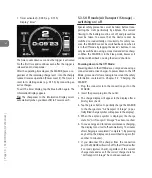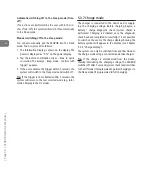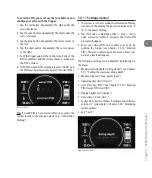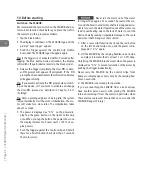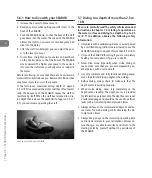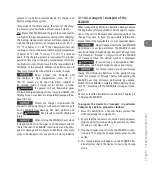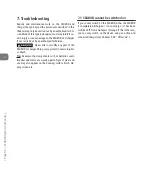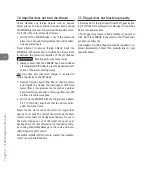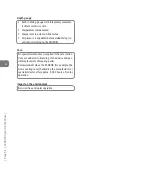
5
| P
age 48 | SEABOB Operator's Manual |
5.8 After use
1. Together with one other person, hold on to the car-
rying handles on both sides, and lift the SEABOB out
of the water, placing the SEABOB on a dry and sturdy
surface that will not damage any components.
Never carry the SEABOB by the Control Grips, front
bumper or display panel but only by the carrying handles
on each side.
Moor the SEABOB safely if you decide to leave it in the
water for a short time. Ensure that the SEABOB cannot
become unattached, injure others or obstruct their path.
2. Switch off the SEABOB to prevent further discharg-
ing (switch device to the Sleep mode by tapping the
button combination silver – blue in quick succession
and confirm with the Trigger within 5 seconds). This
also prevents unauthorized persons, inexperienced
persons or children from using the SEABOB and injur-
ing themselves.
Never leave the SEABOB unattended to prevent children
or other inexperienced or unauthorized persons from us-
ing the device.
3. Do not leave the SEABOB in the sun if it is not being
used. Without water to cool the device, the direct sun-
light can heat the display to temperatures of around
70 °C / 158 °F. If exposed to such heat, the function
can be impaired or irreparable damage may even be
caused to the display. For this reason, you should al-
ways put the SEABOB in the shade when not in use
or, if necessary, cover the display with a wet, light-
colored towel to prevent irreparable damage to the
display caused by excessive heat, particularly as a
result of being in direct sunlight.
Never expose the SEABOB and
the charger to high temperatures (max. 60 °C /
140 °F) caused e.g. by open fire, direct sunlight or
by storage inside a closed motor vehicle or trunk.
If exposed to heat, flammable gases
can be discharged causing serious injury. In addition, the
Display Screen may become irreparably damaged if ex-
posed to heat.
5.7.2 Adjusting the buoyancy of the
SEABOB
The SEABOB has positive buoyancy (the buoyancy chang-
es with the salt content of the water). The buoyancy of
the SEABOB can be adjusted using optionally available
weights.
The benefit of the SEABOB‘s buoyancy: when the SEABOB
is switched off and not fitted with additional weights, it
will always float on the surface of the water or resurface
if submerged.
Tip:
Before adjusting the buoyancy, be sure to read the
"Operator's Manual SEABOB Weight" supplied with the
optionally available weights.
Be sure to observe the safety information given in the
"Operator's Manual SEABOB Weight".
Only attach the buoyancy adjustment weights for
planned dives. Observe the changed driving characteris-
tics which occur through the adjustment of the buoyancy
and the associated changes to the craft‘s own buoyancy
force. Before you drive with the buoyant SEABOB in
deeper waters, it is essential that you gather sufficient
experience with regard to exposure to changed driving
characteristics of the SEABOB by means of test drives in
shallower waters.
End the dive by surfacing in a controlled manner and
in compliance with the required decompression times.
Immediately turn the SEABOB off when a dive has fin-
ished (Sleep mode) and release the buoyancy adjustment
weights from the craft to ensure a buoyant SEABOB can
not be used by inexperienced or unauthorized persons.

